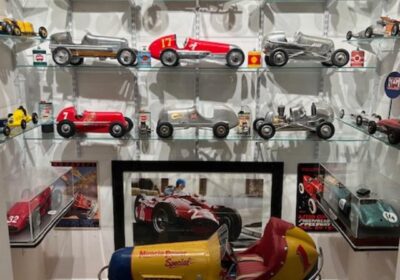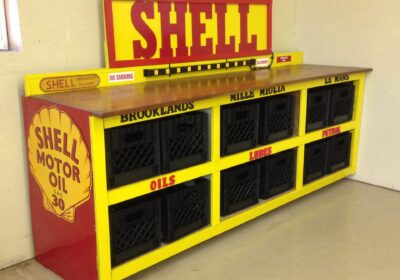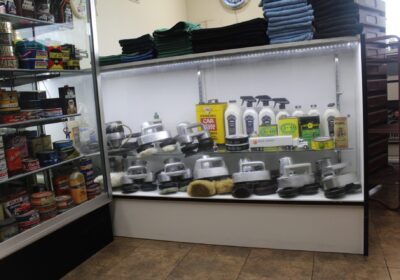I read a recent survey that named the Golden Retriever puppy as America’s cutest puppy and hardest to resist. While that sounds like an accurate choice, I want to share some things I found (over the years) that, at least for me, were harder to resist. The setting for these ”finds” were not at the dog adoption center, but at the Fall Hershey AACA flea market. My brother and I have been attending the Fall pilgrimage for 50 years, and while one would assume we have ”seen it all,” that would be a misstatement. The reason we haven’t ”seen it all” is that, while between us we have over 100 years of walking the rows, there are evidently things that have eluded us; thus, the incentive to keep going back.
I wanted to share some of these ”Golden Retriever Puppies” that I have found in the Green, Red, or Chocolate fields over the years….and yes, not being able to resist them, I brought them home.
Of course, being found at Hershey they are all auto-related, and in fact, they are all autos.
While each one of them is worthy of a complete article (and I might be compelled to address that) I wanted this to simply be a quick excursion into some of the oddities, novelties and attractions that I thought I was lucky enough to find, and to have a brother with a truck to bring them home. All of them needed complete restorations which for us was part of the appeal and desirability. While my brother Phil and I did the restorations, our friend Dennis Wilkes provided his artistic talents in supplying the artwork that became the ”finishing touch” decals.
Again, each one is worthy of full descriptions. The fact that there are clubs, owners, and historians that are dedicated to them attests to their authenticity and contribution to the lore of old cars and their heritage. In addition to making great displays in your garage, office, or living rooms, they don’t have to be walked or house broken.

Built by several companies including Bally, Kiddie and others. Car was mounted on rotating electric motor that allowed the child to feel what it was like to ”drive” the car.

Made from the late 40s until the early 1970s, made by the British Austin Motor Car Company in Wales by disabled miners. Had mock up engine with removeable spark plugs, horn, lights, book (trunk) pneumatic tires. Heavy fan base, with racing competition, displays, restoration centers and parts suppliers. Was sold in high end British department stores.

Made in Berwick, Pa in the 1950’s, was considered a highly respected
1/4 midget, used a Briggs & Stratton engine. Tracks were 264 feet (1/4 of the adults oval track of one-fifth of a mile in length). Drivers were typically ages 5 – 16 years old. This example did not have an engine, but is great for garage-art.

Made in Germany, this is a fully functional car model showing how the major components of a car work. It is mistakenly thought it was used to teach auto mechanic students but it was used to introduce student drivers how cars work. The Germans were insistent that new drivers had an appreciation of the functions of the various mechanical systems. My brother Phil totally rewired the car and it is a marvel to see everything work.







